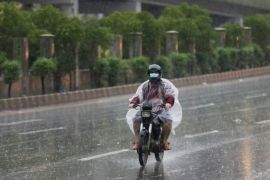Growth in Asia-Pacific developing economies will pick up moderately in 2015, while prospects for growth would be better if supported by much-needed structural reforms, and could also be boosted by lower oil prices, a latest United Nations report predicts on Tuesday.
The UN Economic and Social Commission for Asia and the Pacific (UNESCAP) in its ‘Economic and Social Survey of Asia and the Pacific 2014: Year-end Update’ predicted that the region could post a moderate increase in growth to 5.8 per cent in 2015 from 5.6pc last year; however, despite a fairly positive outlook, the region faces a number of risks and challenges.
In the case of Pakistan, the survey says, “macroeconomic fundamentals will remain fragile due to poor security conditions, political instability and low fixed investment constraints by a shortage of domestic savings.”
The UNESCAP survey emphasised that the regional countries need to address structural challenges that will involve a mix of domestic and regional policies, stating that appropriate macroeconomic policies will help manage developments arising from capital market vitality and falling oil prices.
The drop in oil prices will exert significant impacts on the region. For energy-importing countries with available data in Asia-Pacific, a scenario of oil prices being $10 per barrel lower in 2015 would result in an increase in GDP growth of up to 0.5-percentage points.
The downward trend of oil prices provides an opportunity for regional economies to consider cutting fuel subsidies, which can raise public financial resources for productive investments in the region.
Remittances are likely to decrease further as the amount sent from countries that are oil exporters, like Middle East, will decline. Receiving countries that would be affected are Bangladesh, India, Pakistan, the Philippines and Sri Lanka.
A decrease in regional inflation this year to 3.5pc from 3.9pc in 2014, offers room in some economies for loosening monetary policies to support growth.
“Despite improved prospects many economies in the region face structural constraints which have kept them from realising their growth potential,” UNESCAP Executive Secretary Dr Shamshad Akhtar said.
Economies in South and South-West Asia will continue to experience the highest level of inflation, particularly due to high domestic demand. However, inflation is expected to decrease from 8.3pc to 7.2pc in 2015, the lowest rate in four years in the sub-region, led by decreases in India, Pakistan and Bangladesh.
The survey notes that a key concern for economies in the region is increasing their supply potential by bridging infrastructure gaps. To overcome the structural factors inhibiting growth, a major policy issue is sustained cooperation at the sub-regional and regional levels to invest in physical infrastructure.
Moreover, policies to increase the amount of citizens in decent jobs and reduce youth unemployment should place more emphasis on matching the abilities of workers with the needs of the current and future marketplace.







